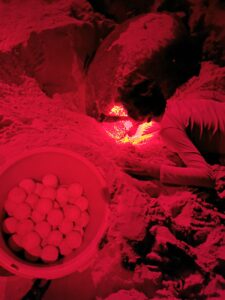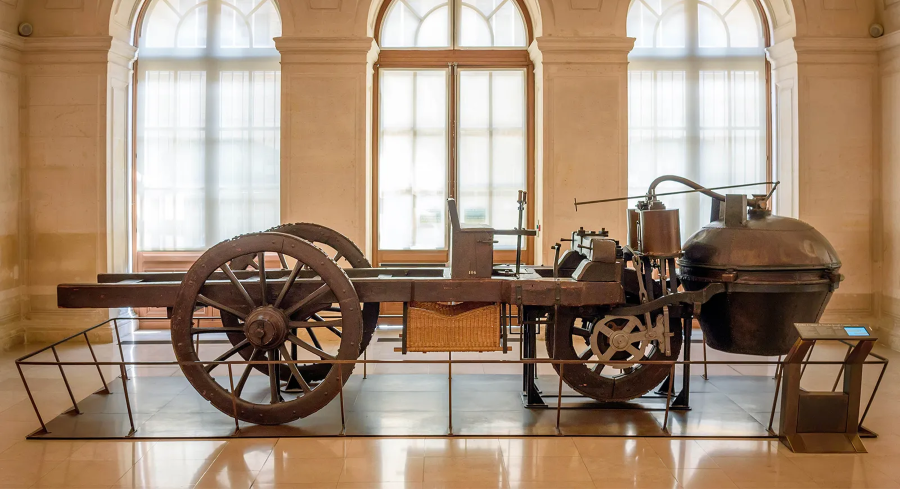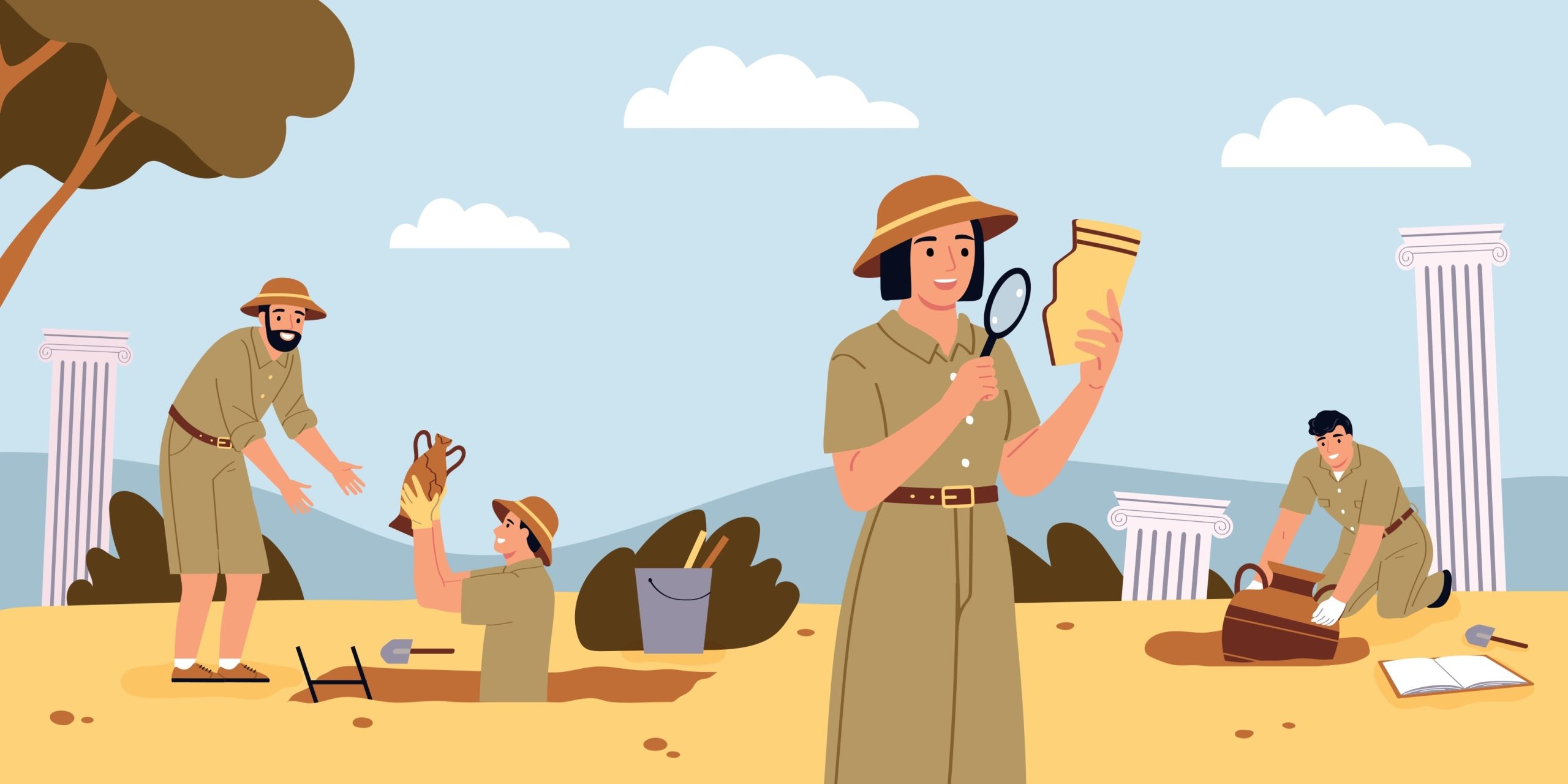Brick and mortar is what I am trained for, but the sea is where I feel I can reenergise. When I came across Universiti Malaysia Terengganu’s Sea Turtle Research Unit (SEATRU UMT) through a resort’s website, it was a dream come true for me as it was not only a meaningful cause to contribute to a unique learning experience but also a vacation at beautiful Redang Island, Terengganu.
The SEATRU volunteer program was established in 1998 to provide long-term assistance for monitoring, tagging, in-situ egg incubating, and conducting research at Chagar Hutang Turtle Sanctuary, Redang Island. This turtle sanctuary is one of the most important nesting beaches on the island, with approximately 700 to 1,500 nests every year.
The nesting season is from April to October, with the peak time in May to July. Green turtles are the majority at the beach, and a hawksbill turtle rarely arrives. Leatherback turtles are said to be functionally extinct in Malaysia.
One-week Programme
During the one-week programme, our duty was to patrol the beach from 8 pm to 6 am under the guidance and supervision of SEATRU interns and research assistants. We were separated into groups and would take turns staying up at night. We took turns to alert each other when turtles arrived to lay eggs.
When a female turtle lands on the beach, she will take 10-20 minutes to crawl up the beach. She is very sensitive during this stage, and she might return to the sea without laying eggs for reasons like feeling threatened, or she might just be visiting during “pregnancy” to scout for the best “labour” location. Incidentally, a female turtle returns to the beach where she was born to lay her eggs. They rely on the Earth’s magnetic field to return to their birthplace.
Once she decides on a spot to nest, she starts body-pitting, which means digging a 50 cm deep depression in the sand with her powerful front flippers. This process typically takes 20-45 minutes. Then, she will use her hind flippers to make a chamber about 80 cm deep for 15 – 30 minutes. Once the chamber is done, the female turtle lays approximately 100 eggs. While she lays the eggs, we drop a coral tied to a string attached to a stick labelled with the date and the turtle ID (as most of them are tagged). The stick is planted adjacent to the chamber to check the nest’s condition in 45 – 60 days.
Identifying with Tags
After all her eggs are laid, she will cover the chamber for 6–15 minutes using her hind flippers. This is when we jot down her ID number or apply new tags and measure the turtle’s carapace (length and width) for research purposes. Finally, the turtle will “sand-bathe” or camouflage her nest with her front flippers for 45 – 75 minutes. By now, the turtle is very tired, and it will take 15 minutes for her to return to the sea. The whole nesting process takes approximately two hours.
However, a female turtle may decide against nesting in that location after body-pitting for various reasons and keep body-pitting at many different locations until sunrise. Her motherly instincts might tell her the place is unsuitable because the temperature is not right, as it hugely affects the gender of the hatchlings. Warm nests mostly consist of female hatchlings, while males are from cooler nests. However, some still make bad decisions by laying their eggs near trees where the sand is moist due to the water-absorbing roots, and the moist condition will invite fungi to feast on the turtle eggs. In this situation, we must relocate the eggs by digging a shoulder-deep hole at a suitable location and placing the eggs inside. We also must be careful not to touch her cloaca while picking up the eggs because a female turtle stops laying when she feels eggs at her cloaca. She would assume the nest is full, stop laying eggs, and return another day to lay the remaining eggs.
Exhausting Nights
Every night was exhausting. It was like working as a gynaecologist in a maternity ward (although I was never in a gynaecology ward). We were given camp beds to sleep inside a wooden house, but everybody opted to sleep on the beach with a mat and sleeping bag unless it rained. Sleeping to the sound of waves crashing and the view of a clear sky with thousands of stars (I spotted one shooting star!) made it all feel worth it.
In the morning, we excavate two nests per person, which were nested 45 – 60 days ago. Sometimes, we find hatchlings climbing out, and we put them in a container and release them only at night to avoid predators. However, we always see blacktip reef sharks circling at night, anticipating their crunchy supper snacks. Sometimes when we excavate the nests, we find eggs sucked dry by ghost crabs with maggots surrounding them or missing eggs because monitor lizards have eaten them. Some eggs never hatch for unknown reasons, and some hatchlings are born with defects or stillborn. Red fire ants also bite hatchlings, resulting in the death of the turtles because of toxic shock. Only one in 1000 hatchlings survive until they reach their maximum size and become an apex predator. This is why 100 eggs are needed to ensure extinction does not occur. Those who do not survive serve their purpose by being prey for other animals, contributing to the natural food cycle. Nature has its reasons, and it is amazing.
Island Fun
After all that excavating, we have the whole 350 metres of beach to ourselves, as it is closed to the public and only open to SEATRU researchers and volunteers. There is also no telco line and mobile data available as it is a very isolated beach. I had plenty of time swimming, snorkelling, using a stand-up paddleboard or napping at the hammocks. While snorkelling, I saw a sea snake, blacktip reef sharks, turtles, and schools of thousands of fish. It was amazing. A friend and I decided to swim out of the bay, hoping to see a whale shark. However, we were not so lucky. We snorkelled where the water was around 15 meters deep, and I could only see blue everywhere: no fish, no sand, no corals. It was scary to be alone underwater. As I swam back to the beach, I slowly saw small fish and seabed, which reassured me. As land animals, it is nice to know that I am not alone and that the land is close. We also hiked up Turtle Rock and could get a view of the whole bay and more. I saw schools of squids from above and eagles’ food remnants. Aside from that, there is also a “prawn spa” in our backyard to soak our feet. It is the lowest tier of a waterfall from which the turtle sanctuary gets its water supply.
Volunteering with a sea turtle conservation project is an experience that allows anyone to witness what most people only ever see on a screen. It also gives you a sense of meaning to life to help our Malaysian green turtles experience what Malaysia truly has to offer: our diverse flora and fauna, beautiful islands and beaches.
For more information, please visit The Sea Turtle Research Unit (SEATRU) website.
NOTE: The author is a final year BSc Quantity Surveying student at Heriot-Watt University (Malaysia), Putrajaya
Original article from Turtle Watch for conservation | The Petri Dish




